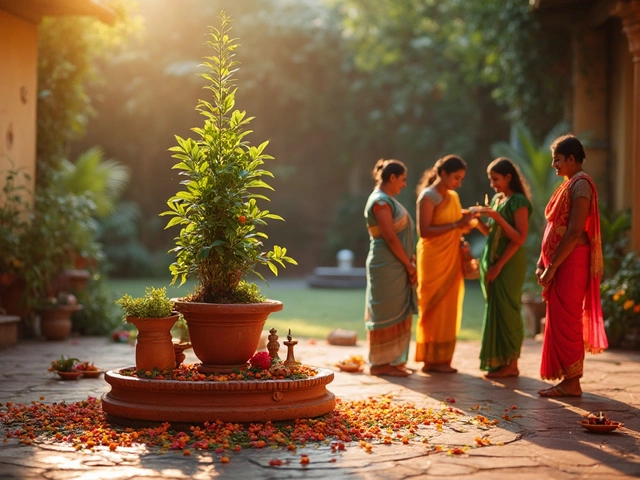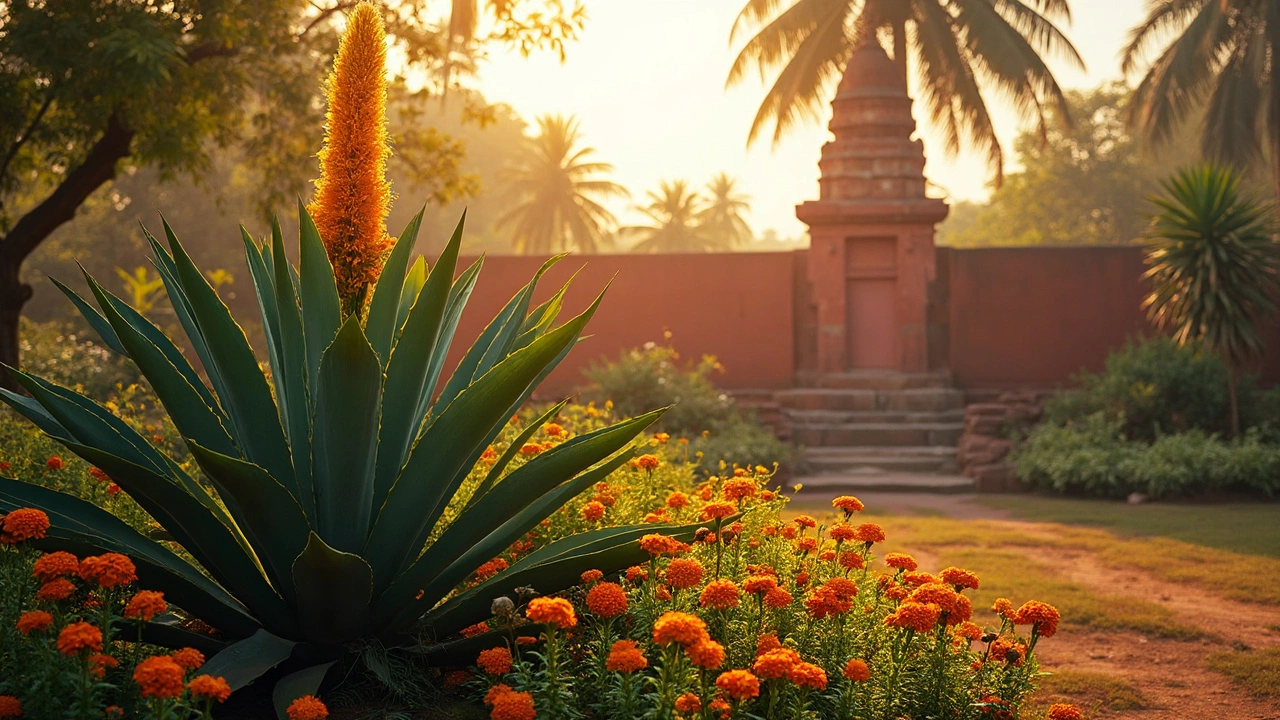Agave americana Care Guide – Growing the Century Plant in India
If you’ve seen a huge, sword‑like succulent on a rooftop or a garden and wondered how to keep it thriving, you’re probably looking at Agave americana, also called the Century Plant. It’s a show‑stopper that loves bright sun and can survive with very little water – perfect for hot Indian climates if you know the basics.
Planting Agave americana the Right Way
First thing – pick a spot that gets at least 6‑8 hours of direct sunlight every day. Agave americana hates shade; its rosettes need full sun to develop those thick, fleshy leaves you love. If you’re in a region with extreme summer heat like Rajasthan or Gujarat, a little afternoon shade can protect the young plant from scorching, but mature plants are fine with full exposure.
Use a well‑draining potting mix. A blend of garden soil, coarse sand, and perlite (about 1:1:1) works great. You can also plant directly in the ground; just make sure the soil isn’t heavy clay. Heavy soil holds water, which can rot the roots. When you dig a hole, make it twice as wide as the root ball but no deeper – agave roots spread horizontally.
Place the plant at ground level, backfill gently, and press the soil around the base. Water it lightly just once to settle the soil, then step back. Agave americana stores water in its leaves, so it doesn’t need a lot of initial moisture.
Watering, Sun, Soil and Common Issues
Watering is where most beginners mess up. During the growing season (spring to early autumn) give the plant a deep soak every 2‑3 weeks, depending on rainfall. Let the soil dry out completely between waterings. In winter, cut back to once a month or even less – the plant goes dormant and uses the water stored in its leaves.
A common myth is that you have to mist the leaves. You don’t. In fact, water on the leaves can invite rot, especially in humid coastal areas like Kerala. Keep the leaves dry; water at the base.
Fertilize sparingly. A low‑nitrogen, high‑phosphorus succulent fertilizer applied once in spring is enough. Too much fertilizer leads to weak, thin leaves and makes the plant more prone to pests.
Watch out for pests: agave mites, mealybugs, and scale insects love the leaf bases. A quick wipe with a cotton swab dipped in rubbing alcohol or a neem‑oil spray every few weeks keeps them at bay. If you spot a fungal spot, prune the affected leaf and treat the cut with a copper‑based fungicide.
One mistake many make is planting agave too close to other plants. Its leaf spines can damage neighbors, and it needs space for air circulation. Give it at least a foot of clearance all around.
If you notice the plant leaning or the leaves turning yellow, it’s a sign of over‑watering or poor drainage. Dig the plant up, shake off excess soil, and re‑plant in fresh, gritty mix.
When the plant is mature (often after 5‑7 years), you might see a tall flower stalk shooting up. This is normal – the plant is completing its life cycle. After it blooms, the rosette usually dies, but you’ll get offsets, or “pups,” at the base that you can separate and replant.
In summary, give Agave americana plenty of sun, a dry, well‑draining soil, and water only when the soil is bone dry. Keep an eye on pests, and you’ll have a dramatic, low‑maintenance succulent that can survive the hottest Indian summers for decades.
What Plant Only Blooms Every 100 Years? Exploring the Legendary Century Flowers
Some plants take patience to a new level, but the century plant pushes it to the extreme, rumored to bloom only once in a hundred years. Although its actual bloom time is shorter, the spectacle it offers is rare and unforgettable. This article covers the famous 'century plant,' its bloom habits, real-life stories, and tips for anyone hoping to see this floral wonder in their lifetime. Get practical advice for growing your own and discover its fascinating place in Indian gardens. Plus, learn why a dog like Max might not be the best helper for tending these spiky giants.
About
Flower Gardening
Latest Posts


Sacred Plant in India: Why Tulsi Rules Flower Gardens
By Alden Thorne Jun 22, 2025

Broccoli Farming in India: Profit Secrets, Tips, and Market Dynamics
By Alden Thorne Aug 7, 2025

Gardening Enthusiasts and Sustainable Green Thumbs
By Alden Thorne Feb 18, 2025

